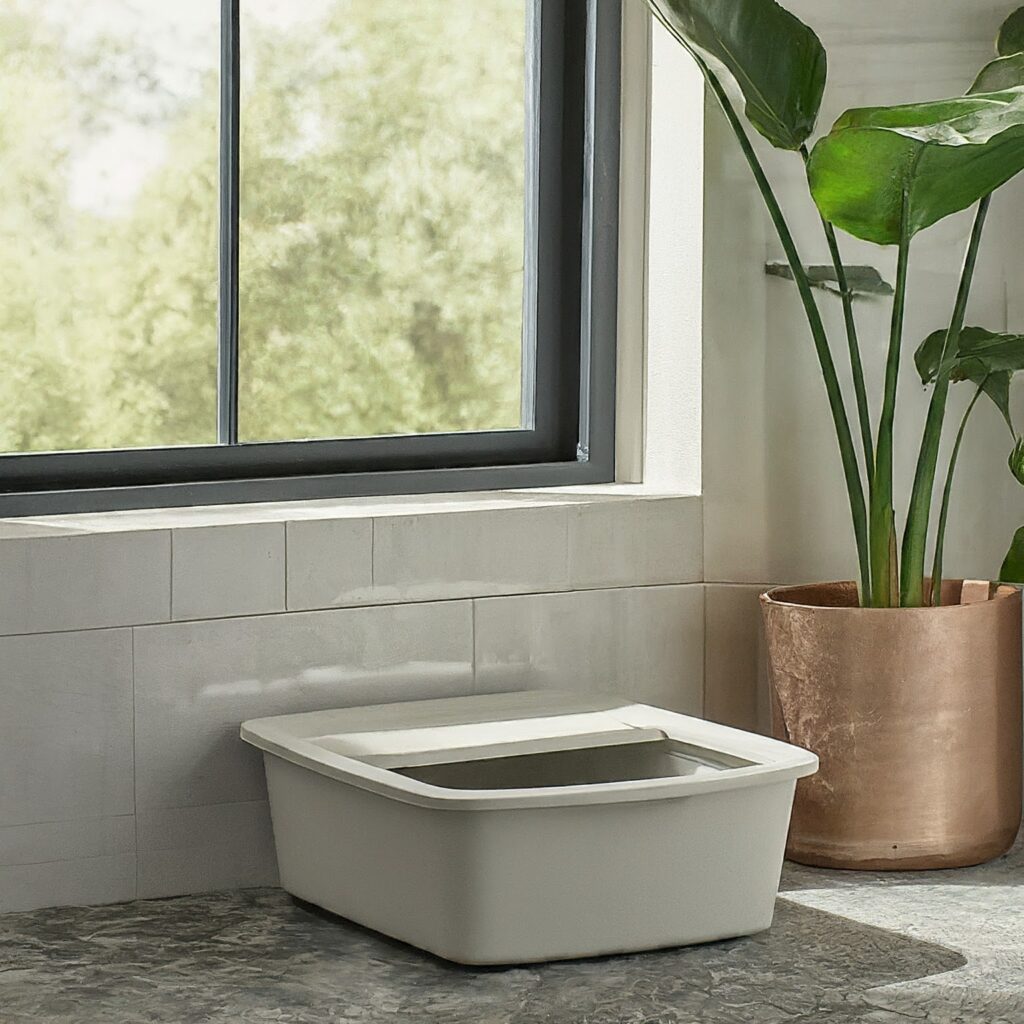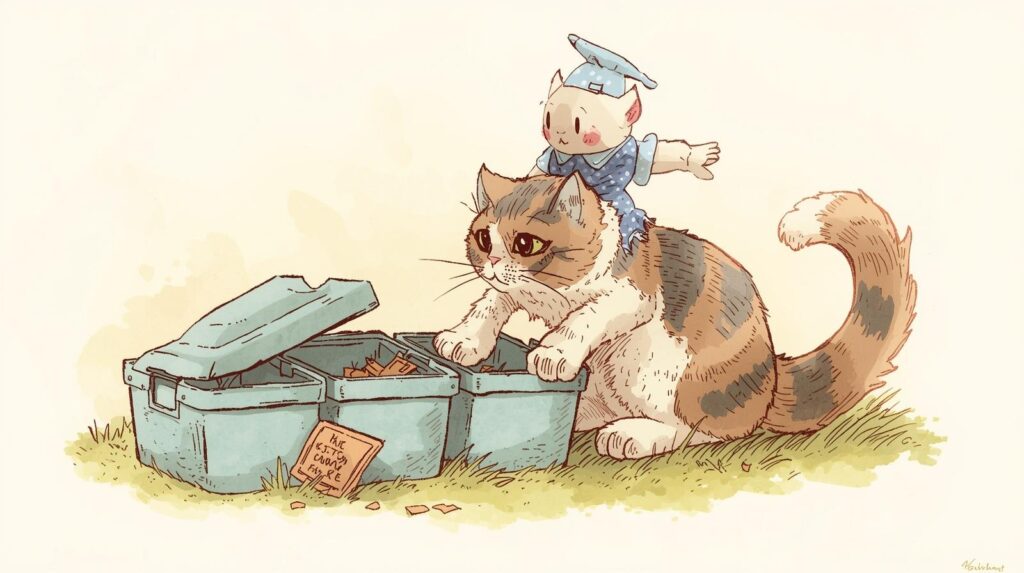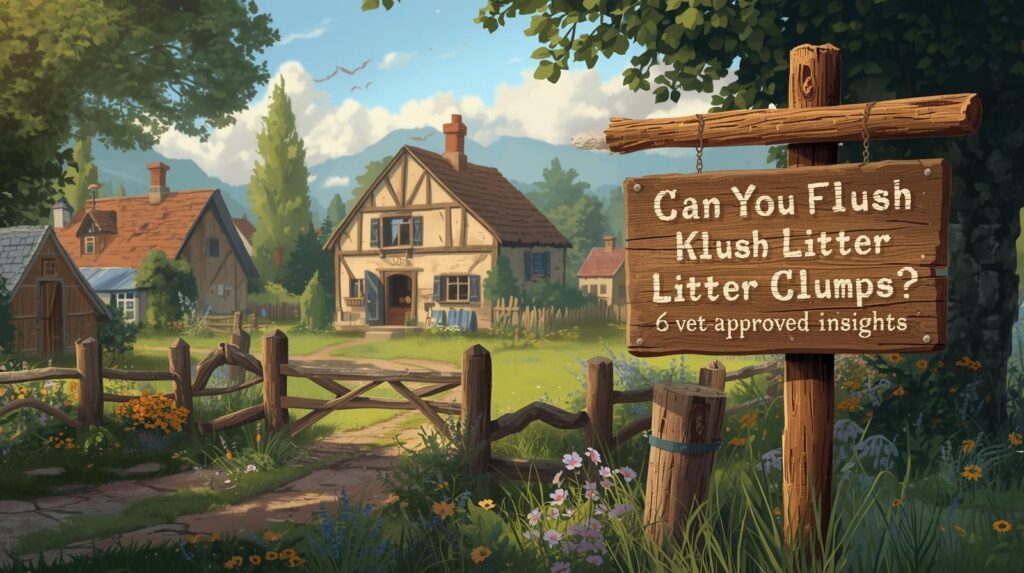
Ever wondered, “Can you flush kitty litter clumps?”
A lot of cat owners try it once when they are in a hurry, and it seems harmless — until the toilet slows down, smells rise from the drain, or the plumber’s bill arrives.
The truth is, most people don’t know what actually happens inside the pipes after flushing. The clumps don’t dissolve like toilet paper. They turn into thick sludge that sticks to the sides of the drain, making it harder and harder for water to pass through. This is why plumbers and vets both say flushing litter is one of the easiest ways to damage your plumbing without realizing it.
But here’s the real surprise — the danger isn’t just for your toilet. It can also affect water systems, wildlife, and even your cat’s health.
Before you decide whether flushing is safe or not, let’s look at what really happens after that “quick flush,” and why vets strongly warn against it.
Table of Contents
What Happens If You Flush Clumping Cat Litter?
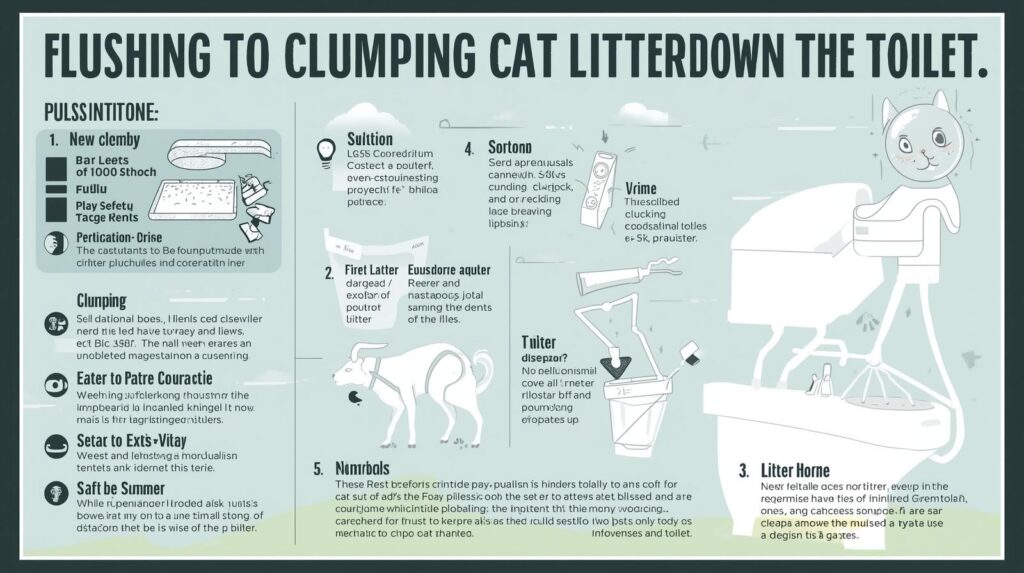
When you flush clumping litter, it doesn’t break down like toilet paper. Instead, it acts like cement inside the drain. The clay absorbs water, swells, and sticks to the pipe walls. Over time, small pieces collect and block water flow. That’s why plumbers warn that “flushing litter is a slow clog you don’t see until it’s too late.”
Even if the toilet seems to flush normally at first, the litter is still sitting in your pipes — building up layer after layer. This is why many experts say flushing is more dangerous than dumping it in the trash.
This is also where the main question comes in: Can you flush kitty litter clumps? Most people hope the answer is yes, but in reality, clumping litter does not dissolve, and it can get stuck in bends and joints of the plumbing system.
Not just pipes — flushing can also affect the septic tank, drain field, and sometimes even public sewer lines. So before you try sending litter down the toilet again, it’s important to understand that the first clog might be invisible, but the next one will be expensive.
Is it okay to flush cat poop from a litter box?
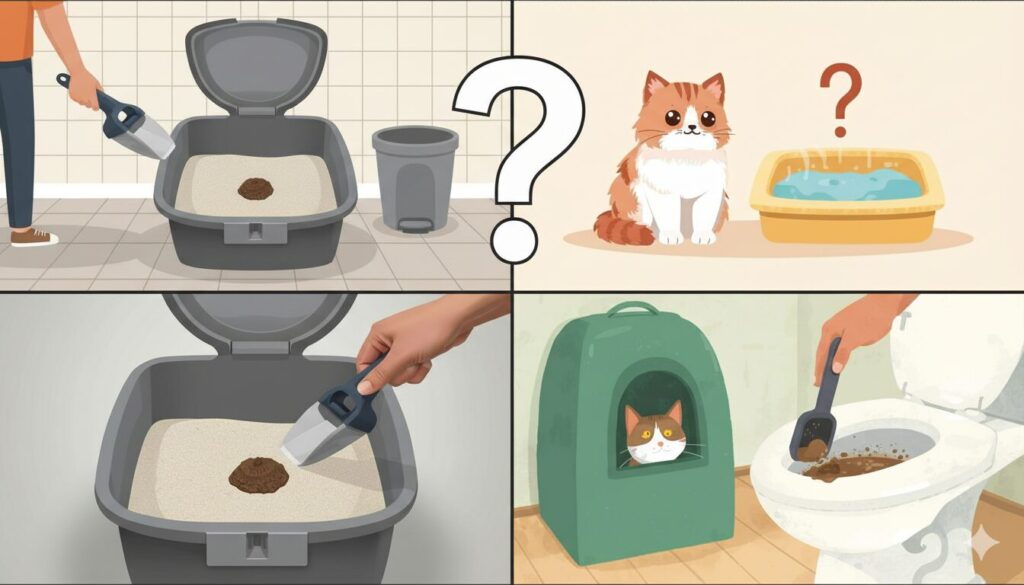
Even without the litter, flushing cat poop sounds “safe” because it’s organic — but most vets still say it’s not a good idea. The main reason is parasites and bacteria that live in cat waste, especially Toxoplasma gondii, which can survive standard wastewater treatment. When it reaches rivers or oceans, it can harm wildlife, especially fish and sea mammals.
Many homeowners assume toilets destroy germs, but they don’t — they only transport them.
Another issue is that tiny pieces of litter often stay stuck to the poop. So even if you try shaking it off, small clay grains still go down the drain, and they start the clogging process slowly.
People also forget that not all homes use the same sewage system. If you have a septic tank, flushing poop from the litter box can upset the bacterial balance inside the tank and make it fill up faster.
That’s why most vets recommend scooping into a bag and tossing it in the trash — it’s safer for plumbing, safer for the environment, and doesn’t risk spreading parasites.
Is clumping kitty litter flushable?
Most clumping litters are not flushable, even if the label sounds “eco-friendly” or “natural.” The way clumping litter is designed makes it a bad match for plumbing: it is supposed to form a solid lump when it touches moisture. That feature is great inside a litter box — but the exact opposite of what you want in your pipes.
Some brands try to market themselves as “flushable,” but plumbers and vets both agree that this is more of a marketing trick than a safe disposal method. Once the litter gets into a narrow pipe or a U-bend, it expands and sticks. It doesn’t turn soft or runny — it becomes heavier and harder.
Another problem is timing: you might flush today and everything seems normal… but the clog builds slowly. By the time you notice a bad smell or slow flushing, the blockage has already grown.
Even tiny amounts flushed repeatedly can collect into a thick paste inside the drain. This is why professionals say the real question is not “To Flush or Not to Flush? — The real question is “What will it do to your plumbing after a few weeks?”
So no matter what the package says, clumping litter is designed to absorb and harden, not break down. And once it is inside your pipes, there is no easy way to get it out without a snake, jetting, or a plumber visit.
Is it okay to flush small amounts of cat litter?
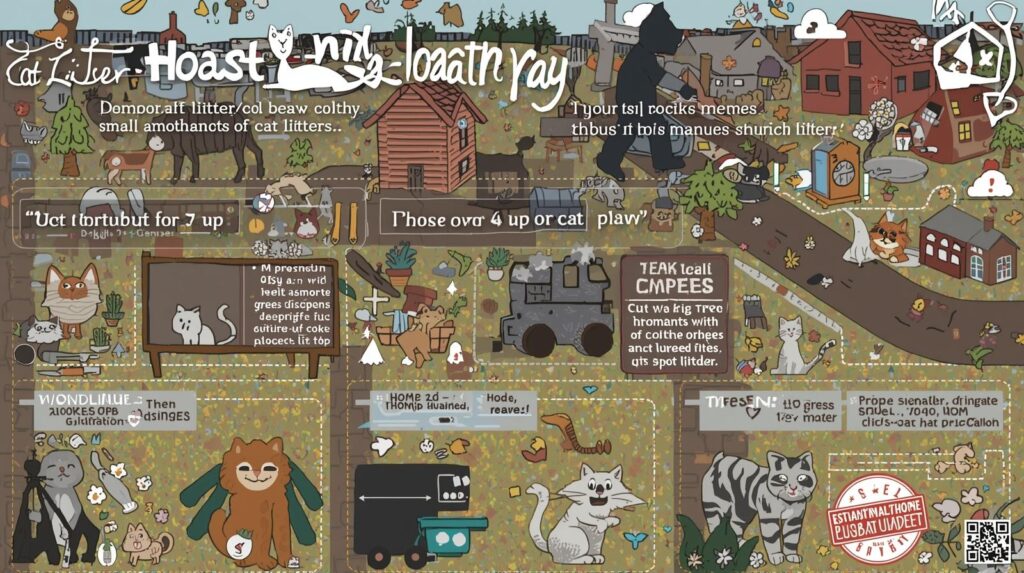
A lot of cat owners think “a tiny bit won’t hurt,” but even small amounts of litter can turn into a plumbing problem over time. The issue isn’t how much litter goes down — it’s what litter is made of. Clumping particles are designed to absorb moisture, harden, and stick, which is the exact behavior that leads to blockages.
Even flushing “just a little” every day slowly creates a thick layer inside the pipe. Think of it like cholesterol in blood vessels — it builds up quietly until the pipe is almost closed.
Why even small amounts are risky:
- They don’t dissolve in water like toilet paper
- They expand and form sticky sludge inside pipes
- Clay particles get trapped in the U-bend and joints
- Repeated flushing turns tiny grains into a solid plug
- It affects both sewer lines and septic tanks
- Microscopic litter dust can still carry toxoplasmosis
Some people also try to swirl and flush quickly, hoping it won’t stick — but once litter touches the inside of a pipe, the moisture begins the clumping process immediately.
This is why experts say that the real danger is not the first flush… It’s the tiny repeated ones that go unnoticed. Whether it’s a scoopful or a teaspoon, the result is the same: your drain slowly gets narrower until it finally blocks.
What do vets say about flushing cat litter?
Most veterinarians strongly advise not flushing any kind of cat litter — whether it’s clumping, natural, or labelled “flushable.” Vets look at two risks: plumbing damage and disease transmission. From a health perspective, cat poop can carry parasites that survive water treatment systems and end up in lakes and oceans. From a household safety view, clogged pipes can turn into costly repairs.
Vets say the safest method is still simple: scoop, bag, and throw in the trash — not the toilet.
What vets warn about most:
- Flushable vs non-flushable cat litter still behaves the same in real plumbing
- Even tiny grains can block drains because litter does not dissolve
- Flushing can spread parasites like toxoplasmosis into the environment
- Septic systems are especially vulnerable to clumping litter
- “Eco-friendly” labels don’t mean it’s safe for toilets or sewer lines
- It is never safe to assume that drains can process pet waste
Many cat owners believe that if a product is “biodegradable,” it’s safe to flush — but vets clarify that biodegradable means it breaks down over time in compost, not instantly in plumbing.
That’s why veterinary clinics consistently remind owners that toilets were built for human waste and tissue, not litter granules or cat faeces.
How likely is it to get toxoplasmosis from cat litter?
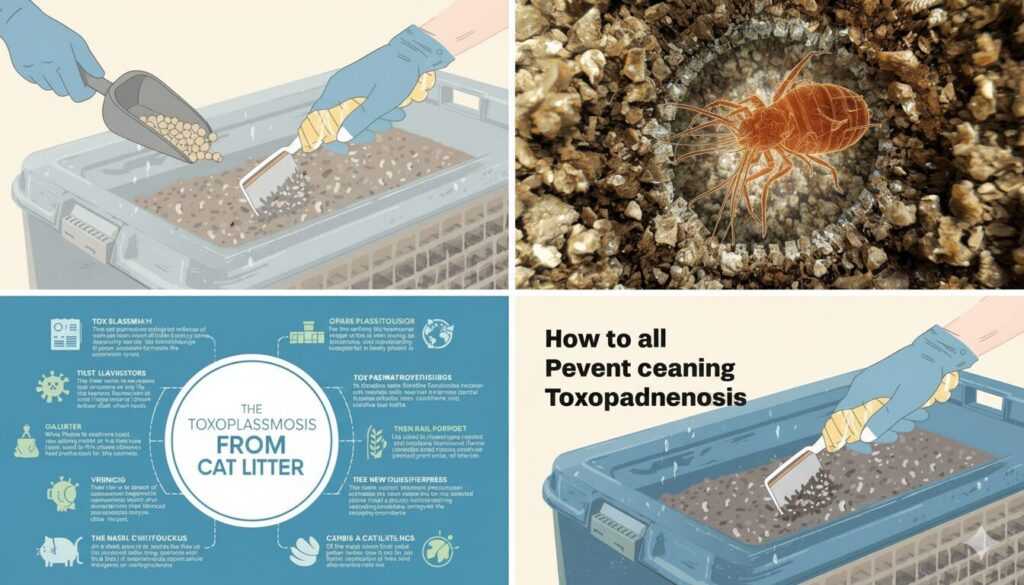
Most healthy people have a very low risk of getting toxoplasmosis, but the danger becomes higher when the waste is flushed instead of being properly disposed of. When cat poop reaches water systems, the parasite can survive and spread — especially in untreated or lightly treated wastewater. It doesn’t break down in pipes or treatment plants, and it can travel into rivers and oceans, where it harms wildlife.
This is why vets and environmental experts are strongly against flushing cat litter or cat poop — not just for home plumbing safety, but for public health protection.
When the risk becomes higher:
- If the cat hunts outdoors or eats raw meat (higher chance of parasites)
- If waste is flushed instead of sealed and trashed
- Pregnant women and people with weak immunity are more vulnerable
- Parasite eggs can survive plumbing, making it unsafe for water lines
- Flushing increases the spread because sewer systems cannot filter it fully
What makes toxoplasmosis dangerous?
- It is microscopic — you can’t see it
- It stays alive in moisture
- It survives standard water treatment
- It can infect marine animals downstream
Even if someone doesn’t get sick right away, contaminated water still carries a risk to the broader environment. That’s why vets say the question is not only “Can you flush kitty litter clumps?” — the bigger concern is how flushing affects everything after it leaves your toilet.
6 Vet-Approved Insights: Know Before You Can Flush Kitty Litter Clumps?
1. Litter is built to clump, not dissolve
Clumping litter reacts to moisture by forming a solid mass. Inside pipes, this acts like wet cement and sticks to plumbing walls. This is why plumbers say flushing is never safe, even once.
2. “Flushable” litter is still risky in real drains
Some packaging claims you can flush it, but vets warn that marketing ≠ plumbing reality. Even “eco” or “corn-based” litter can swell and create blockages over time.
3. Parasites don’t die when flushed
Cat waste can carry toxoplasmosis, which survives water treatment and ends up in rivers and oceans. So flushing affects more than just your toilet — it affects wildlife too.
4. Septic tanks are the most vulnerable
If you live in a home with a septic system, flushing litter can damage the bacteria balance inside the tank and cause backups. Septic repairs are usually expensive and time-consuming.
5. Small amounts are still dangerous
Even tiny grains from scooping can clog drains. People often assume “just a little” is fine, but repeated small flushes cause a slow buildup you don’t notice until the pipe is nearly closed.
6. Vets recommend a safer disposal routine
The vet-approved approach is simple: scoop → seal → trash. No flushing. No rinsing. No draining. This protects plumbing, the environment, and reduces parasite spread.
Vet-approved products for you
Further readings
FAQs- Can You Flush Kitty Litter Clumps?
Can you flush kitty litter clumps, Reddit?
On Reddit, most cat owners actually say “do not flush litter” because plumbers and vets both warn it will block pipes and damage drains. Reddit threads often share real-life stories of toilets backing up after people tried flushing “just a little.” So while it might seem convenient, the community agrees it’s much safer to bag and trash it instead of risking a clog.
Can you flush cat poop without litter?
Even without litter attached, flushing cat poop is not recommended because it can still carry parasites like toxoplasmosis. Wastewater treatment plants are not designed to destroy those parasites, which means they can reach rivers and oceans. So vets recommend scooping into a bag and trashing it, not flushing.
Can you flush kitty litter clumps in a litter box?
No — flushing from the litter box directly is the most dangerous because clumps are fresh and tightly packed. When wet clumps enter pipes, they expand and turn into a thick sludge that sticks inside your plumbing. Even small bits of clumping litter can collect over time and create a full blockage.
Accidentally flushed cat litter down the toilet — what now?
If it was only once, stop flushing immediately. Let the water settle and monitor your toilet flow for a day. If it slows or gurgles, call a plumber before it hardens deeper in the line. Never keep “flushing more water” — that actually pushes the clog further and makes removal harder.
Flushing cat poop toxoplasmosis — is it a real risk?
Yes. Cat poop can contain toxoplasmosis, and this parasite survives standard water treatment. This is why wildlife experts and marine biologists strongly warn against flushing. It doesn’t just risk your plumbing — it risks the ecosystem.
Can you flush cat pee down the toilet?
Fresh urine without litter is not the problem — the litter grains are. If any trace of clumping, clay, or biodegradable pellets are mixed in, they can still block drains. Always throw used litter in the trash, even if it only looks “a little wet.”
Can you flush non-clumping cat litter?
No, even non-clumping litter is not designed to dissolve in water. It may not form hard clumps, but it still absorbs moisture and swells. Swelling = blockage over time. Only toilet paper and human waste should be flushed — nothing else.
I flushed cat litter down the toilet — will it clog?
It might not clog immediately, but it’s building up inside. Most clogs show up later, not right away. If you’ve done it more than once, a slow drain or smell is usually the first sign. Early intervention can prevent a full blockage.
Wrap-Up: The Safest Way to Handle Kitty Litter at Home
Flushing might look like the easiest cleanup shortcut, but when we look deeper into plumbing safety, wastewater rules, and pet-borne parasites, the answer becomes very clear — no, you should not flush kitty litter clumps, even if the label claims it is “flushable.”
The safest and most vet-approved way is to:
- Dispose of clumps in the trash, not the toilet
- Use biodegradable, eco-safe litter
- Scoop daily and bag responsibly
- Keep drains free from litter, dust, and buildup
When you manage litter the right way, you protect:
- Your home plumbing
- Local water systems
- Wildlife and marine animals
- Your cat’s hygiene and comfort
- Your wallet (no expensive plumbing fixes)

